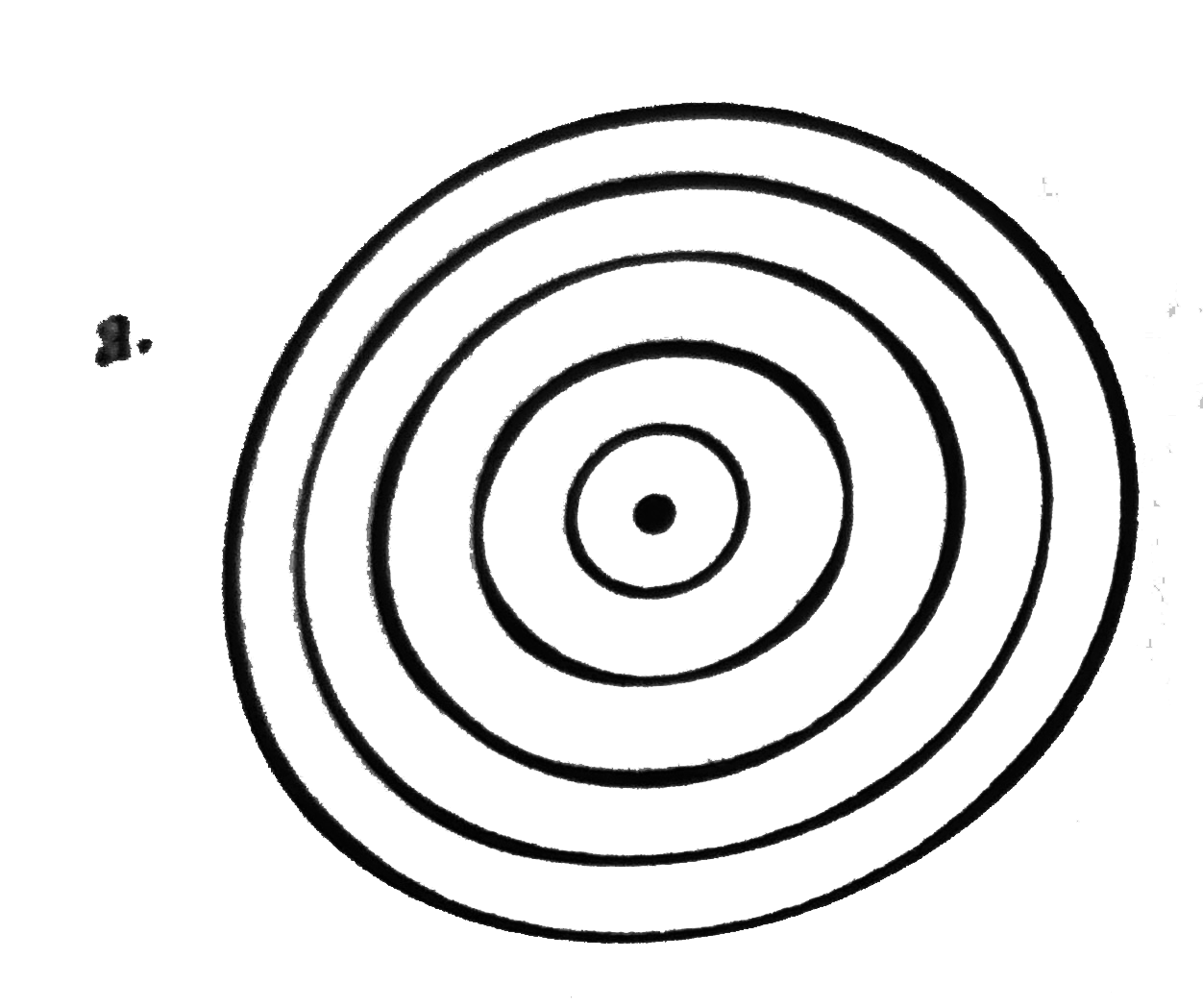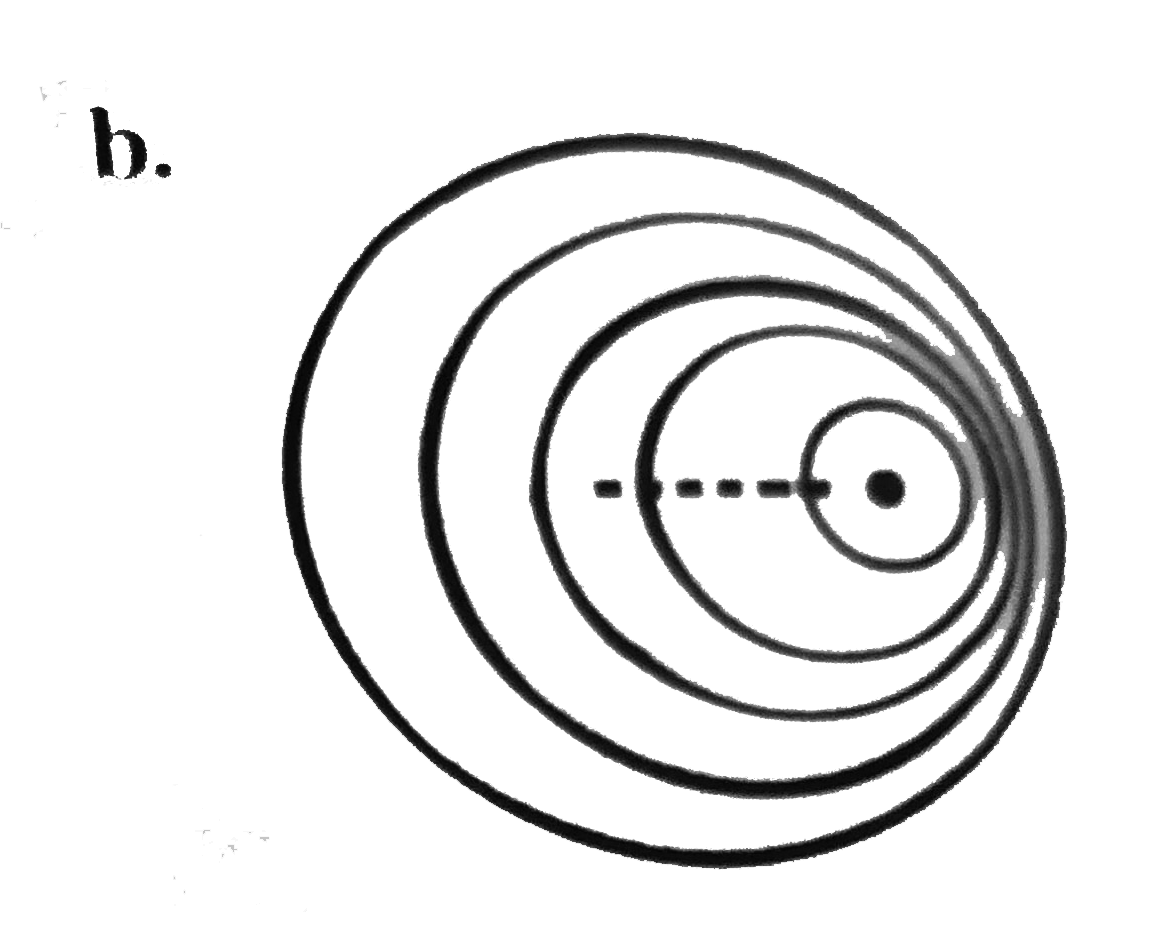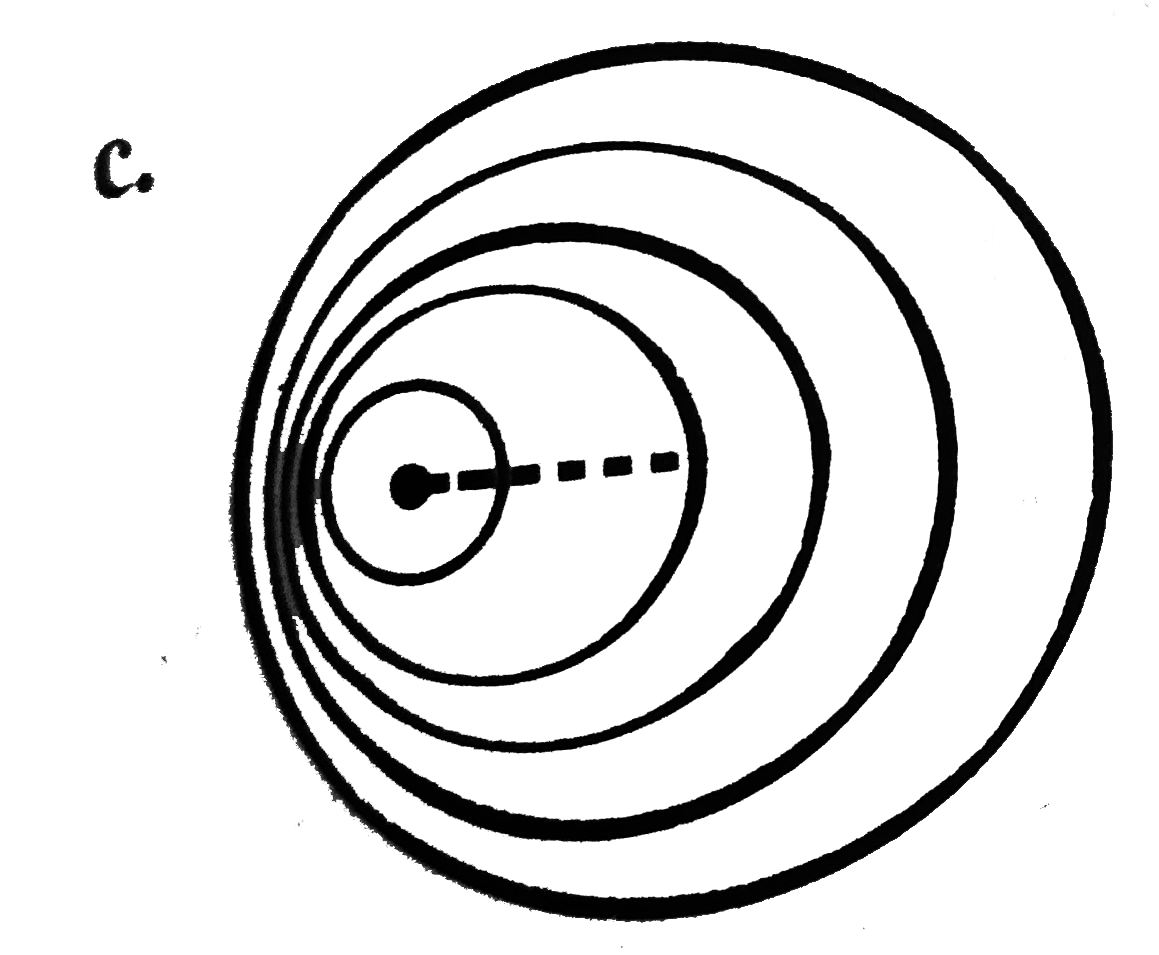If the source is moving towards right, wavefront of sound waves get modifies to



none of these
The correct Answer is:D
To solve the problem of how the wavefront of sound waves gets modified when the source is moving towards the right, we can follow these steps:
1. Understanding the Scenario:
- We have a sound source that is moving towards the right.
- The sound waves are emitted in all directions from the source.
2. Wavefront Representation:
- A wavefront is a surface over which an oscillation has a constant phase.
- When the source is stationary, the wavefronts are evenly spaced.
3. Effect of Source Movement:
- As the source moves to the right, it emits new wavefronts while it is in motion.
- The wavefronts emitted after the source has moved will be closer together on the right side (the direction of movement) and farther apart on the left side.
4. Compression and Expansion of Wavefronts:
- On the right side (in the direction of the source's movement), the wavefronts get compressed because the source is moving towards the observer.
- On the left side (opposite to the direction of movement), the wavefronts get expanded because the source is moving away from these wavefronts.
5. Mathematical Relation:
- The relationship between the speed of sound (v), frequency (f), and wavelength (λ) is given by the equation:
v=fλ
- When the source is moving, the effective wavelength (λ) changes based on the relative velocity of the source and the speed of sound.
6. Conclusion:
- Since the wavefronts on the right are compressed and on the left are expanded, we can conclude that the wavefronts are modified such that the spacing between them decreases on the right and increases on the left.
Final Answer:
- The correct modification of the wavefronts when the source is moving towards the right is that the wavefronts on the right side get compressed, while those on the left side get expanded.
- We have a sound source that is moving towards the right.
- The sound waves are emitted in all directions from the source.
- A wavefront is a surface over which an oscillation has a constant phase.
- When the source is stationary, the wavefronts are evenly spaced.
- As the source moves to the right, it emits new wavefronts while it is in motion.
- The wavefronts emitted after the source has moved will be closer together on the right side (the direction of movement) and farther apart on the left side.
- On the right side (in the direction of the source's movement), the wavefronts get compressed because the source is moving towards the observer.
- On the left side (opposite to the direction of movement), the wavefronts get expanded because the source is moving away from these wavefronts.
- The relationship between the speed of sound (v), frequency (f), and wavelength (λ) is given by the equation:
v=fλ
- When the source is moving, the effective wavelength (λ) changes based on the relative velocity of the source and the speed of sound.
- Since the wavefronts on the right are compressed and on the left are expanded, we can conclude that the wavefronts are modified such that the spacing between them decreases on the right and increases on the left.
- The correct modification of the wavefronts when the source is moving towards the right is that the wavefronts on the right side get compressed, while those on the left side get expanded.
Topper's Solved these Questions
- SOUND WAVES AND DOPPLER EFFECTBOOK - CENGAGE PHYSICS ENGLISHCHAPTER - SOUND WAVES AND DOPPLER EFFECTEXERCISE - Multiple Correct
44 Videos
- SOUND WAVES AND DOPPLER EFFECTBOOK - CENGAGE PHYSICS ENGLISHCHAPTER - SOUND WAVES AND DOPPLER EFFECTEXERCISE - Assertion-Reasoning
24 Videos
- SOUND WAVES AND DOPPLER EFFECTBOOK - CENGAGE PHYSICS ENGLISHCHAPTER - SOUND WAVES AND DOPPLER EFFECTEXERCISE - Subjective
56 Videos
- RIGID BODY DYNAMICS 2BOOK - CENGAGE PHYSICS ENGLISHCHAPTER - RIGID BODY DYNAMICS 2EXERCISE - Interger
2 Videos
- SUPERPOSITION AND STANDING WAVESBOOK - CENGAGE PHYSICS ENGLISHCHAPTER - SUPERPOSITION AND STANDING WAVESEXERCISE - Comprehension Type
5 Videos
Similar Questions
When source is linear, the wavefront is
View Solution(a) Does the change in frequency due to Doppler effect depend on the distance between source (b)Does the change in frequency due to Doppler effect on the fact that source is moving towards the observer or observer is moving towards the source ?
View Solution
Knowledge Check
A sound source is moving towards a stationary observer with 1/10 of the speed of sound. The ratio of apparent to real frequency is
A109B(109)2C(1110)2D1110
A source of sound moves towards an observer
View SolutionFor point source, the wavefront is
View SolutionA source of sound moves towards an observe.
View SolutionThe frequency of a source of sound as measured by an observer when the source is moving towards him with a speed of 30 m/s is 720 Hz. The apparent frequency when the source is moving away after crossing the observer is x×102Hz what is the value of x. ......... (velocity of sound is 330 m/s)
View SolutionTwo sources of sound moving with same speed v and emitting frequency of 1400 Hz are moving such that one source s1 is moving towards the observer and s2 is moving away from observer. If observer hears beat frequency of 2 Hz. Then find the speed of source. Given vsound>>vsource and vsound=350ms
View SolutionA source is moving towards an observer with a speed of 20 m / s and having frequency of 240 Hz . The observer is now moving towards the source with a speed of 20 m / s . Apparent frequency heard by observer, if velocity of sound is 340 m / s , is
View SolutionA source emitting a sound of frequency f is placed at a large distance from an observer. The source starts moving towards the observer with a uniform acceleration a. Find the frequency heard by the observer corresponding to the wave emitted just after the source starts. The speed of sound in the medium is v.
View Solution
